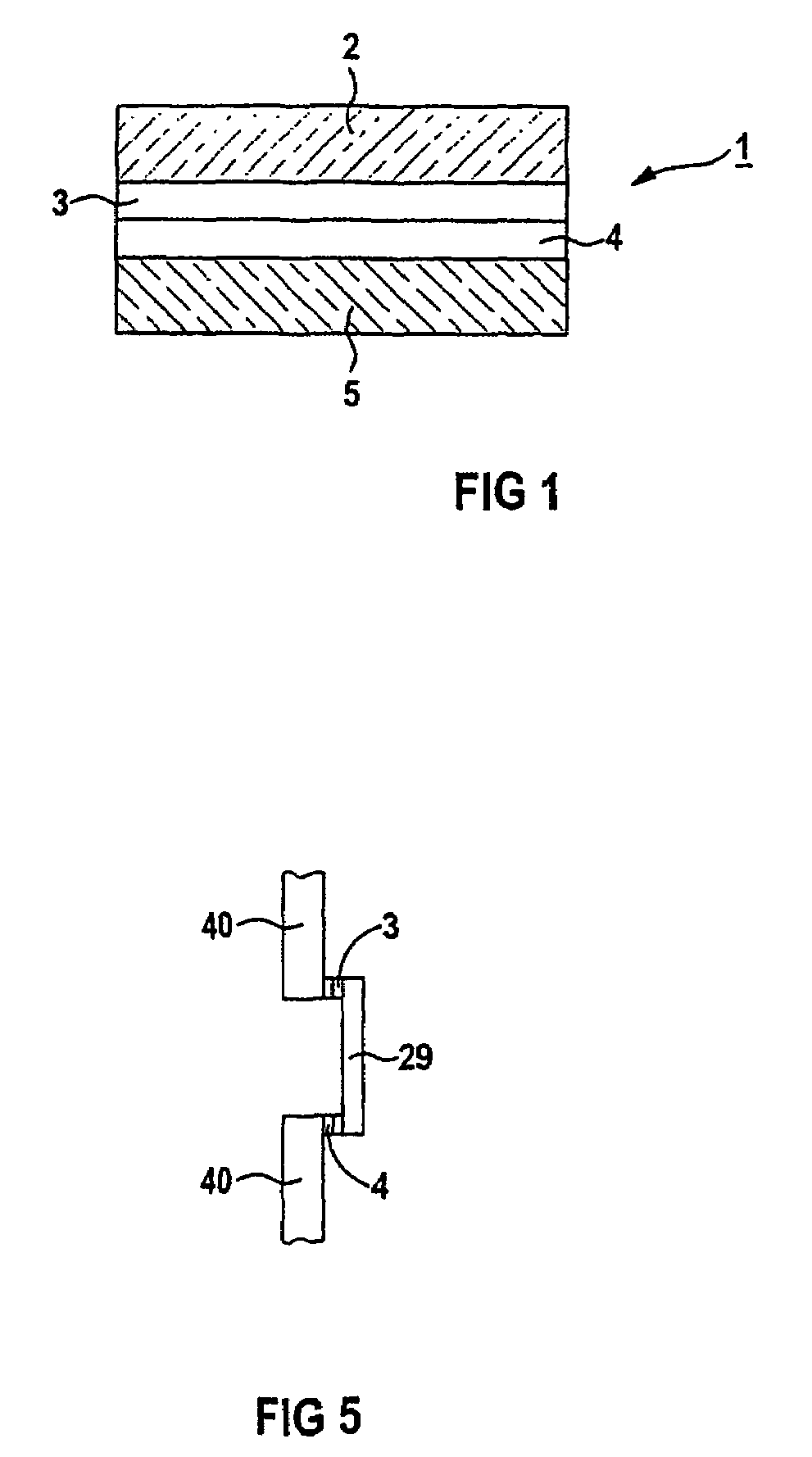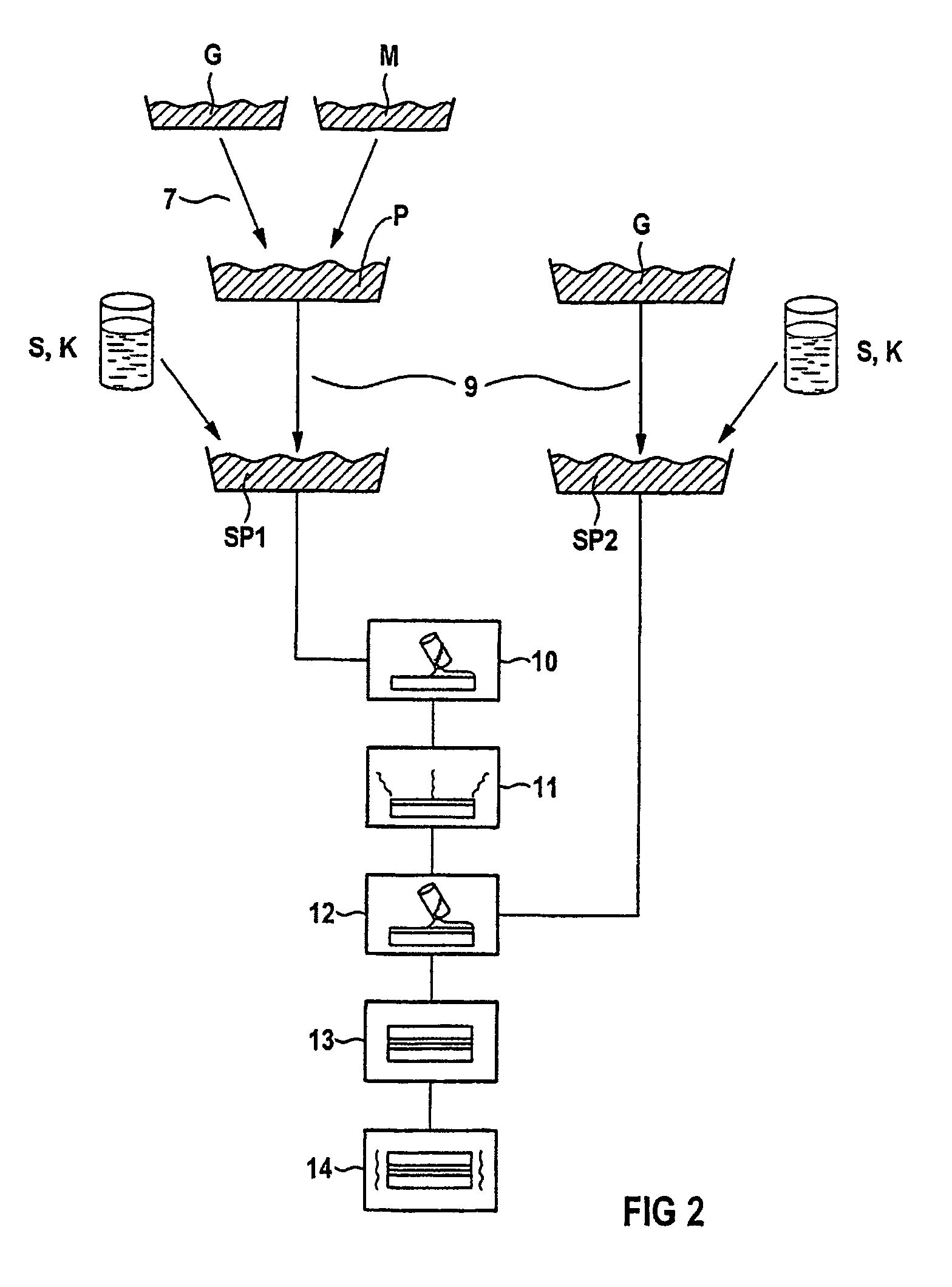Material composite and production and use of the material composite
a technology of material composites and composites, which is applied in the field of vacuum-tight and thermal shock-resistant material composites, can solve the problems of extreme difficulty in making a thermal shock-resistant, secure connection between these two materials, and achieve the effect of reducing mechanical loads
- Summary
- Abstract
- Description
- Claims
- Application Information
AI Technical Summary
Benefits of technology
Problems solved by technology
Method used
Image
Examples
Embodiment Construction
[0039]FIG. 1 shows a section through a material composite 1 including an aluminum oxide ceramic 5 which is joined to an aluminum oxide sapphire 2 via a first joining layer 3 and a second joining layer 4. The first joining layer 3 comprises a manganese silicate glass which has 70% by weight of included molybdenum. The second joining layer 4 likewise comprises a manganese silicate glass, but it has 20% by weight of included aluminum oxide. The material composite 1 illustrated has been produced by sintering the individual materials to one another. Both intermeshing of the materials and partial vitrification of the materials occurs between the aluminum oxide sapphire 2 and the second joining layer 4 and between the first joining layer 3 and the second joining layer 4. After the sintering operation, the aluminum oxide ceramic 5 has been securely joined to the first joining layer 3 via a surface solid solution which has formed.
[0040]FIG. 2 diagrammatically depicts the process used to prod...
PUM
| Property | Measurement | Unit |
|---|---|---|
| Percent by mass | aaaaa | aaaaa |
| Percent by mass | aaaaa | aaaaa |
| Percent by mass | aaaaa | aaaaa |
Abstract
Description
Claims
Application Information
 Login to View More
Login to View More - R&D
- Intellectual Property
- Life Sciences
- Materials
- Tech Scout
- Unparalleled Data Quality
- Higher Quality Content
- 60% Fewer Hallucinations
Browse by: Latest US Patents, China's latest patents, Technical Efficacy Thesaurus, Application Domain, Technology Topic, Popular Technical Reports.
© 2025 PatSnap. All rights reserved.Legal|Privacy policy|Modern Slavery Act Transparency Statement|Sitemap|About US| Contact US: help@patsnap.com



